Garden Maintenance Primrose Hill: A Comprehensive Guide
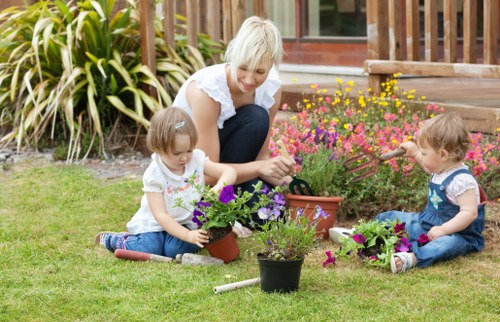
Welcome to our detailed exploration of garden maintenance in Primrose Hill. Gardens in this iconic London locale are not only a source of tranquility but also represent the art, science, and passion behind landscaping excellence. In Primrose Hill, maintaining your garden requires a blend of care, commitment, and seasonal adjustment so that your outdoor space remains vibrant year-round. This article provides an in-depth look into effective garden care practices, proper upkeep, and the importance of horticulture specific to the Primrose Hill environment. Whether you are a seasoned gardener or a curious beginner, our guide will walk you through various techniques that keep your garden in peak condition while celebrating the local community spirit.
Primrose Hill is renowned for its scenic views and welcoming neighborhoods, making garden maintenance not just a hobby but an integral part of local culture. Garden care in this area often echoes the standards of both traditional and modern horticultural practices. People here understand that consistent upkeep and timely interventions in the garden can boost curb appeal and significantly improve the overall quality of life. This balance between function and beauty is what sets Primrose Hill gardens apart and gives them an edge in maintaining a harmonious blend of natural and urban living spaces.
In our journey through effective garden maintenance, we will explore various aspects from routine lawn maintenance to specific gardening tips that are suitable for the fluctuating seasons. We will discuss the importance of timely pruning, strategic planting, and proper soil nutrition to ensure that every corner of your garden thrives. The aim is to provide readers with a practical and engaging roadmap to achieve a flourishing garden that is both relaxing and a celebration of nature’s beauty, reflecting the spirit of Primrose Hill.
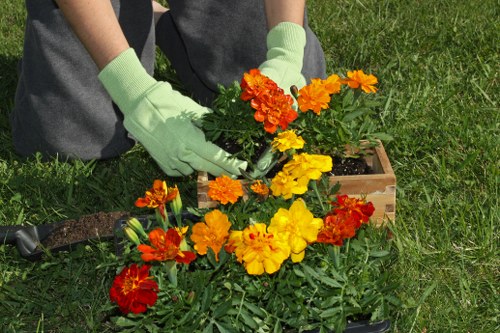
Understanding the Importance of Garden Maintenance
Maintaining a garden is much more than just a chore—it is an art form that nurtures nature and nurtures the gardener. In Primrose Hill, where community and nature intermingle, regular garden maintenance is a way to honor both the heritage of the area and its future. Routine activities such as soil testing, weeding, and fertilizing are essential components of good upkeep. Besides enhancing property values, these efforts also contribute towards environmental sustainability. When a garden is well maintained, it becomes a haven that attracts beneficial insects, birds, and local wildlife that thrive in balanced ecosystems.
A typical garden maintenance regime in this area includes both aesthetic decisions and technical care. Homeowners often engage in regular pruning, seasonal planting, and organic gardening methods that reduce the need for harsh chemical treatments. This approach not only promotes a healthier ecosystem but also ensures that every element of the garden, from lush lawns to blooming flowerbeds, remains resilient against the trials of urban air quality and shifting weather patterns. Understanding these practices fosters community pride and inspires local residents to adopt sustainable methods in their own gardens.
Moreover, the practice of garden maintenance here often extends into community initiatives with neighborhood gardens and collective maintenance projects that bring residents together. The shared responsibility in nurturing green spaces helps build a stronger community bond, while also serving as a public example of how individual care contributes to a broader environmental benefit. In short, when you engage in quality garden care, you contribute to a mosaic of healthy, delightful green spaces throughout Primrose Hill that uplift the entire community.
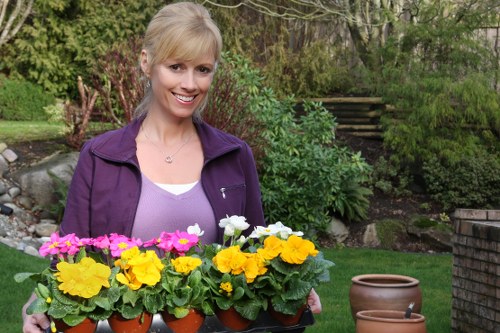
Seasonal Garden Tasks and Tips
The art of garden maintenance requires a good understanding of seasonal tasks. In Primrose Hill, each season brings its own set of challenges and opportunities. During the winter months, gardeners often focus on protecting plants from harsh weather, mulching to preserve heat, and planning for early spring planting. Regular inspections are crucial to prevent frost damage, and delicate plants should be shielded with covers or burlap. As the frost recedes, the focus shifts towards soil preparation as the groundwork for vibrant blooms in the coming months.
In spring, the garden begins to awaken. Tasks like cleaning up debris from winter, dividing perennials, and starting seeds indoors or in greenhouses take center stage. The transformation from dormant to active can be a thrilling time for gardeners. It is also a season to introduce new flowering varieties and to re-energize old garden sections with fresh nutrients. A solid routine in the spring can set the tone for a fruit-bearing, colorful summer. This seasonal planning not only supports plant growth but also provides exciting opportunities to experiment with new landscaping ideas.
As summer settles in, water management and pest control become the most significant challenges. Ensuring that the lawn is evenly watered without overdoing it is key to lawn maintenance. Meanwhile, monitoring for invasive species and identifying potential pest issues early can prevent major setbacks. Gardeners in Primrose Hill often utilize organic pesticides coupled with natural repellants to maintain an eco-friendly approach. In early autumn, keener attention is given to pruning, reducing summer blooms, and preparing the garden for the upcoming dormancy of winter, making seasonal transitions smooth and sustainable.
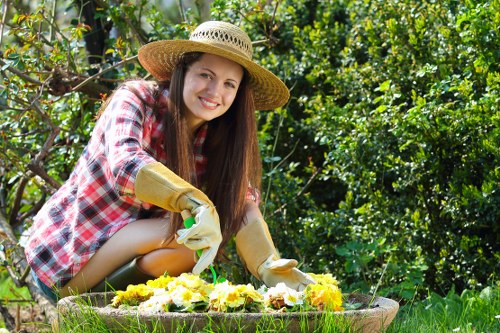
Local Insights: Primrose Hill and Its Surroundings
Primrose Hill’s gardens are a reflection of a vibrant community that takes pride in its surroundings. The local flair for gardening is visible in the way residents incorporate traditional horticulture with modern design elements. Local experts recommend a balanced mix of ornamental and edible plants to bring diversity to any garden. In this area, even small spaces can be transformed into lush, tranquil retreats by using vertical gardens, decorative container planting, and innovative water features. This blend of practicality and artistic design creates an environment where each garden tells its own story.
In addition, many dedicated gardeners in Primrose Hill share simple tips on water conservation and the effective use of organic resources. Such practices include rainwater harvesting, composting, and using native plant species that are more resilient to the local climate. The overall goal is to ensure that garden maintenance is both sustainable and increasing in style. Community-based workshops and local gardening clubs often lead these educational sessions, further emphasizing the importance of collective care in nurturing neighborhood gardens.
This local approach does not limit itself solely to Primrose Hill. Garden enthusiasts in areas surrounding this iconic neighborhood also participate in collective events, demonstrating solidarity in environmental stewardship. In fact, the sense of local pride extends to several nearby communities. Areas like Camden Town, Kentish Town, Regent's Park, Fitzrovia, and Marylebone are within close proximity. Other friendly neighborhoods such as Bloomsbury, Soho, Notting Hill, Islington, Hampstead, Highgate, Angel, and Covent Garden are all known for their unique contributions to urban horticulture. Each of these areas boasts unique features: from quaint allotments to large urban parks, all of which inspire the garden maintenance practices seen in Primrose Hill. The exchange of knowledge between these communities ensures that successful techniques and innovative ideas can be easily shared and adapted to suit local needs.
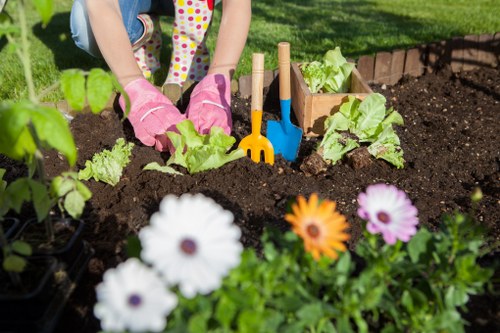
Cultivating a Healthy Garden and Community Engagement
As we draw nearer to the end of our discussion on garden maintenance in Primrose Hill, it is clear that the journey to a thriving garden incorporates both technical skills and community spirit. Whether you are fine-tuning your garden care routine or taking part in local horticulture events, the benefits of meticulous garden maintenance extend far beyond the simple act of beautification. Starting with solid soil management, watering systems, and a regular schedule of pruning and fertilizing, your garden can become a sanctuary that reflects the rich cultural tapestry of Primrose Hill.
Moreover, community engagement plays a significant role in the overall success of garden projects. Many residents volunteer for local clean-up days, share surplus produce with neighbors, or even open their gardens to local schools and art events. This sense of togetherness fosters a shared responsibility towards environmental sustainability. Practical tips passed among friends and community organizations further help each participant improve their gardening techniques by combining hands-on experience with helpful advice and mutual support.
For those looking for a personal approach, integrating modern landscaping ideas with traditional garden care techniques is a worthy pursuit. Consider incorporating native plant species, which are well-adapted to the local climate. Use natural fertilizers and eco-friendly pest control methods to minimize chemical use. Additionally, keeping a garden journal to document growth cycles, maintenance tasks, and seasonal changes can provide valuable insights for years to come. Simple, consistent efforts will ensure that your garden not only looks beautiful but also serves as an enduring legacy of environmental care, contributing positively to the local community and beyond.
Frequently Asked Questions
- What are the best seasonal tasks for maintaining a Primrose Hill garden?
The best tasks include winter protection and mulching, spring cleaning and replanting, summer watering and pest control, and autumn pruning to prepare for winter. Tailor your tasks to local weather and plant needs. - How can I get started with organic gardening in Primrose Hill?
Start by testing your soil, choosing native plants, and using organic fertilizers. Attending local workshops and joining community gardening clubs can also provide useful insights and practical experience. - What local areas near Primrose Hill share similar gardening cultures?
Nearby communities like Camden Town, Kentish Town, Regent's Park, Fitzrovia, Marylebone, Bloomsbury, Soho, Notting Hill, Islington, Hampstead, Highgate, Angel, and Covent Garden have vibrant gardening cultures influenced by local traditions and modern horticultural practices. - How do I ensure sustainable water usage in my garden?
Use techniques such as rainwater harvesting, mulching, and selected native plants that require less water. Regular monitoring of soil moisture and using drip irrigation systems can also help maximize efficiency. - What are some community activities I can join to improve my gardening skills?
Look for local garden clubs, community clean-up events, and educational workshops. Many neighborhoods in and around Primrose Hill host seasonal events focused on organic gardening, sustainable landscaping, and urban horticulture.

